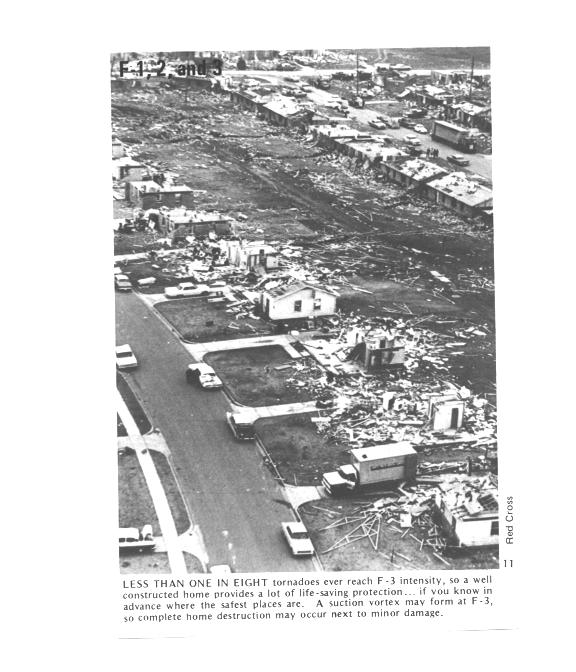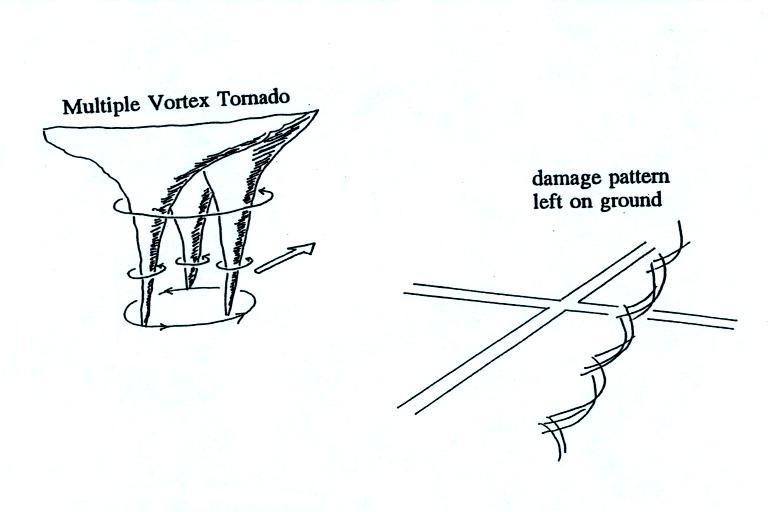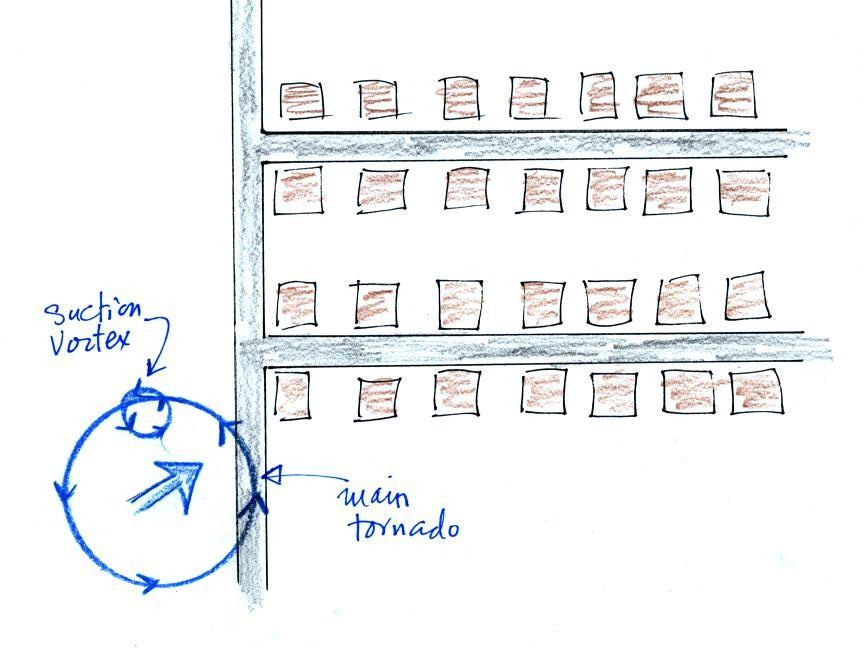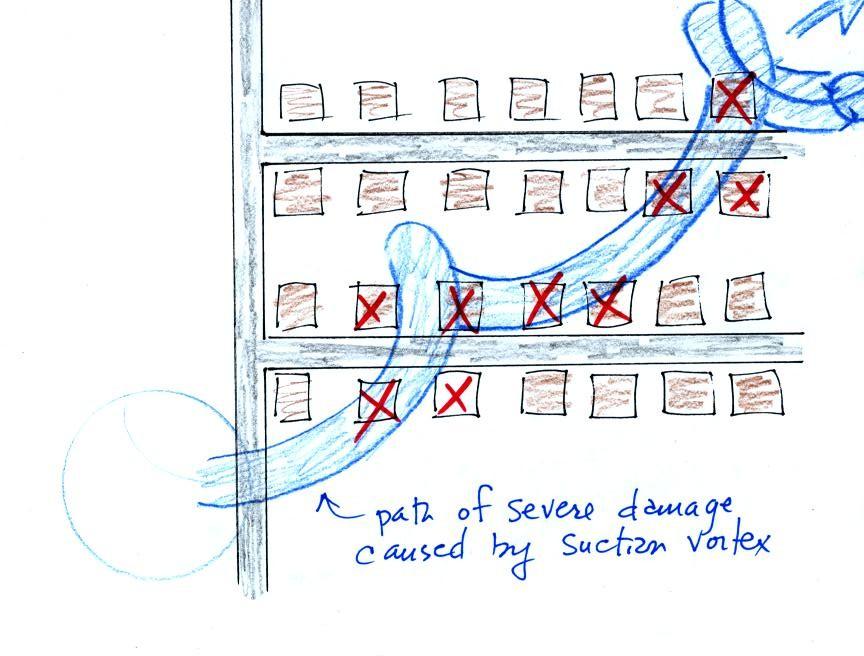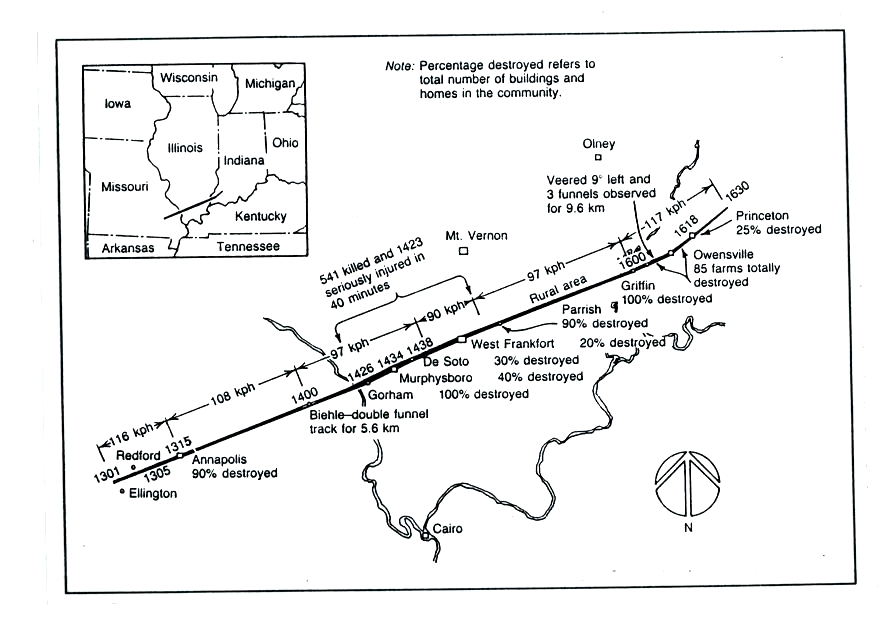

| 54a |
F3 |
Grand Isle NE |
Mar. 13, 1990 |
tornado cloud is pretty thick and vertical |
| 61f |
F3 |
McConnell
AFB
KS |
Apr. 26, 1991 |
this is about as close
to a tornado as you're ever likely to get. Try to
judge the diameter of the tornado cloud. What
direction are the tornado winds spinning? |
| 52 |
F5 |
Hesston
KS |
Mar. 13, 1990 |
Watch closely, you may
see a tree or two uprooted by the tornado winds |
| 51 |
F3 |
North
Platte NE |
Jun. 25, 1989 |
Trees uprooted and
buildings lifted by the tornado winds. The online
video is longer than the one shown in class and has some
good closeup video. See especially the last couple
of minutes of the video |
| 65 |
F1 |
Brainard
MN |
Jul. 5, 1991 |
It's a good thing this
was only an F1 tornado |
| 57 |
F2 |
Darlington
IN |
Jun. 1, 1990 |
Tornado cloud without
much dust |
| 62b |
F2 |
Kansas
Turnpike |
Apr. 26, 1991 |
It's sometimes hard to
run away from a tornado. Watch closely you'll see a
van blown off the road and rolled by the tornado.
The driver of the van was killed! |
| 47 |
F2 |
Minneapolis
MN |
Jul. 18, 1986 |
Tornado cloud appears
and disappears. The online video compares features
seen in this tornado with one created in a laboratory. |
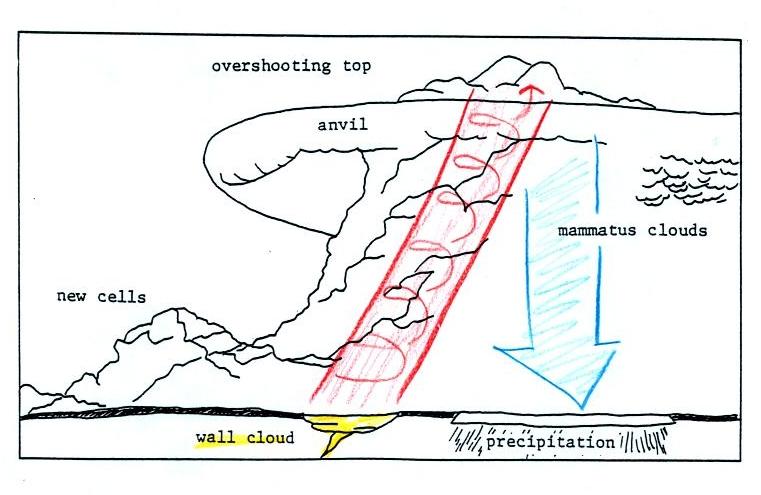
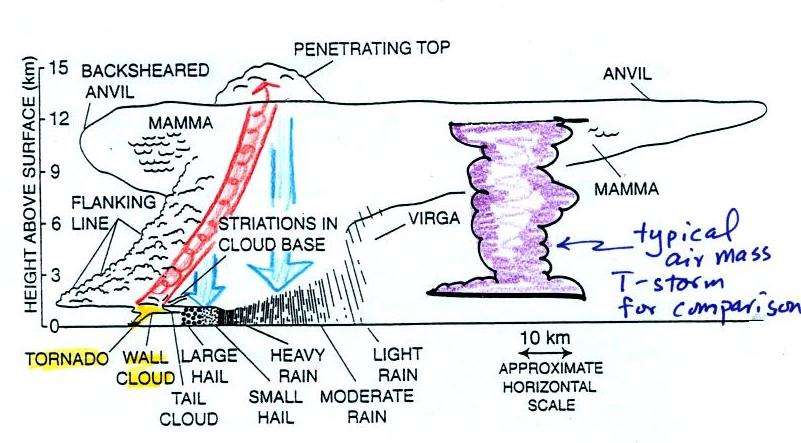
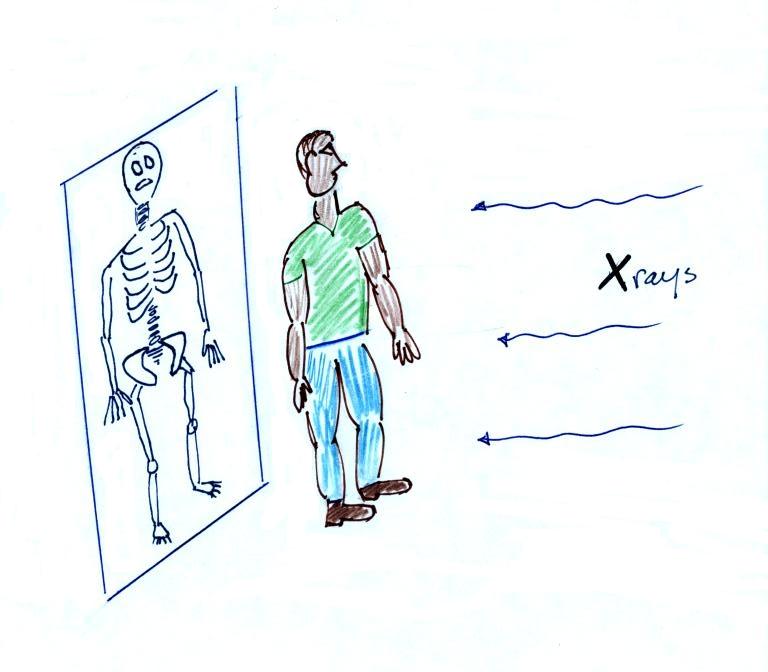

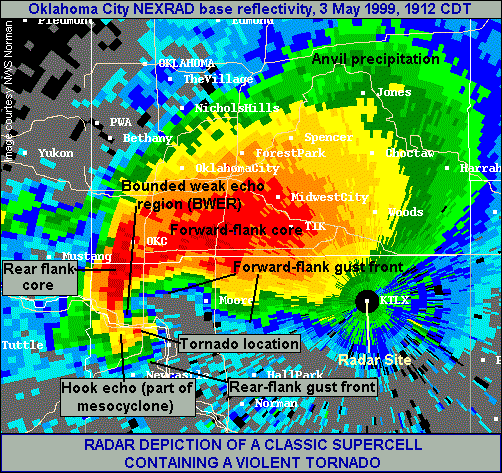
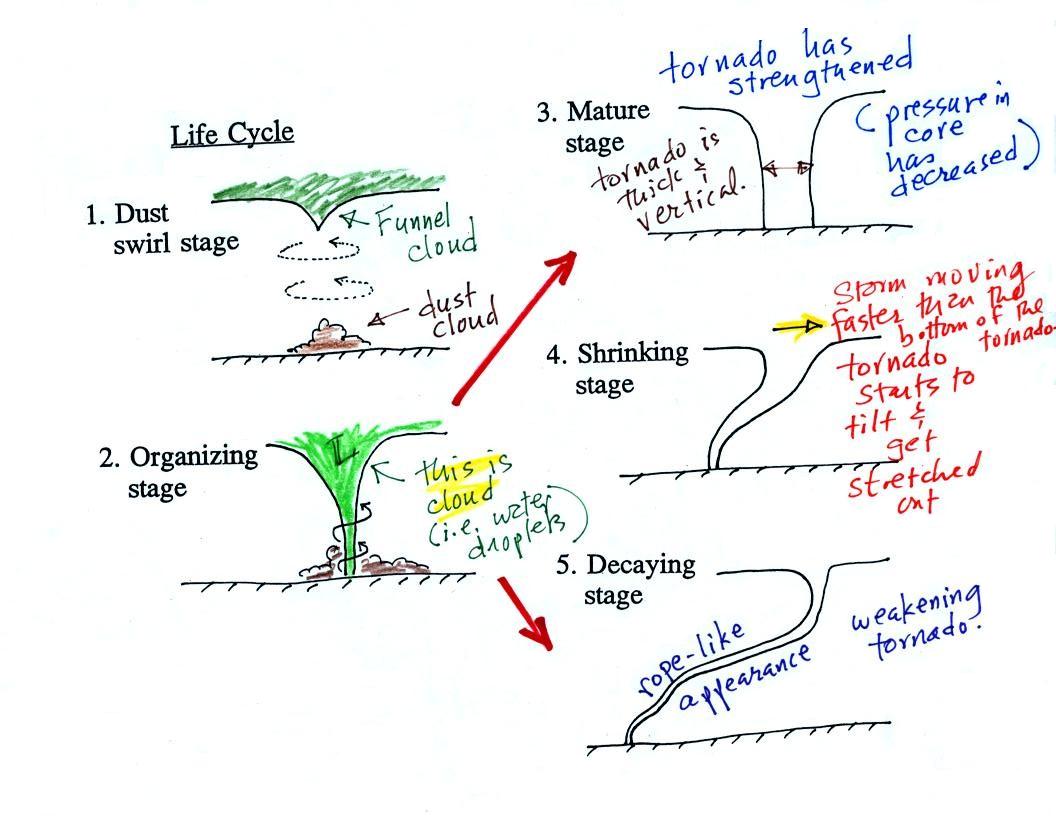
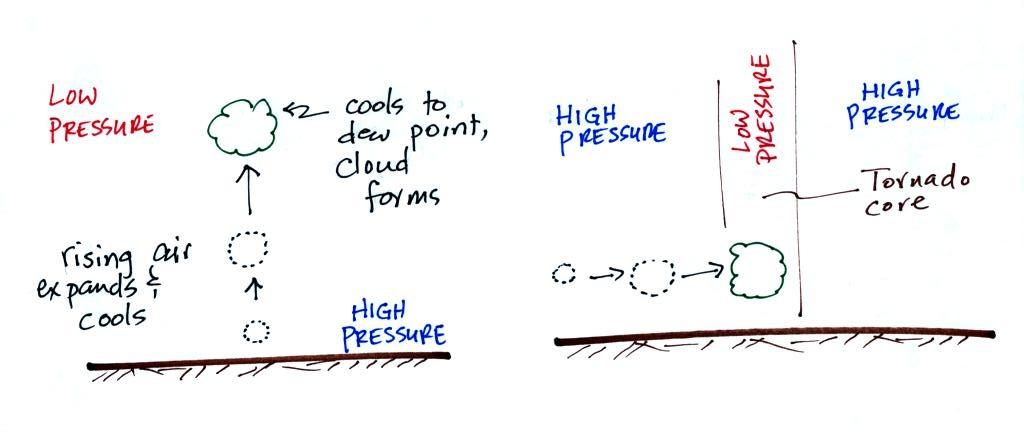
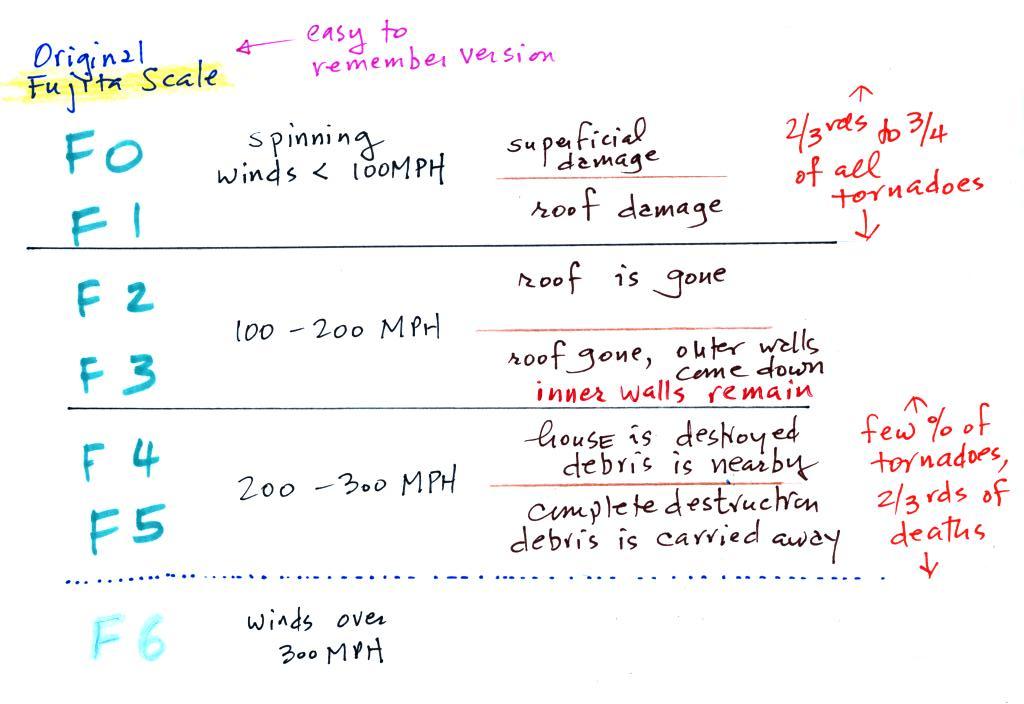
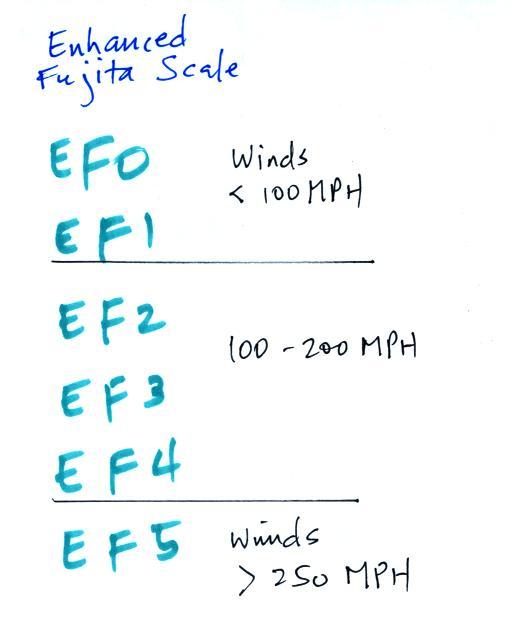
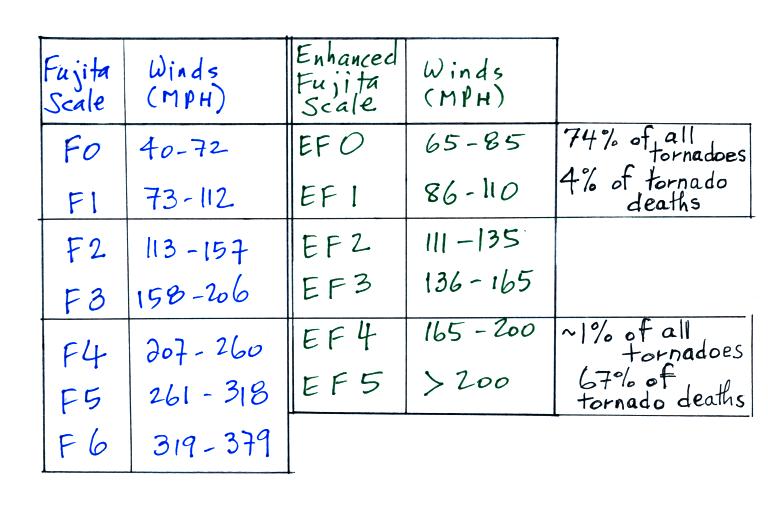
| Damage
Indicator |
Description |
| 2 |
1 or 2 family
residential home |
| 3 |
Mobile home (single
wide) |
| 10 |
Strip mall |
| 13 |
Automobile showroom |
| 22 |
Service station canopy |
| 26 |
Free standing light pole |
| 27 |
Tree (softwood) |
| degree
of damage |
description |
approximate wind speed (MPH) |
| 1 |
visible damage |
65 |
| 2 |
loss of roof covering
material |
80 |
| 3 |
broken glass in doors
& windows |
95 |
| 4 |
lifting of roof deck,
loss of more than 20% of roof material, collapse of
chimney, garage doors collapse inward, destruction of
porch roof or carport |
100 |
| 5 |
house slides off
foundation |
120 |
| 6 |
large sections of roof
removed, most walls still standing |
120 |
| 7 |
exterior walls collapse
(top story) |
130 |
| 8 |
most interior walls
collapse (top story) |
150 |
| 9 |
most walls in bottom
floor collapse except small interior rooms |
150 |
| 10 |
total destruction of
entire building |
170 |
| EF2 Damage roof is gone, but all walls still standing |
EF4 Damage only the strong reinforced concrete basement walls are left standing. It doesn't look like there would have been anywhere in this building that would have provided protection from a tornado this strong. |
EF5 Damage complete destruction of the structure |
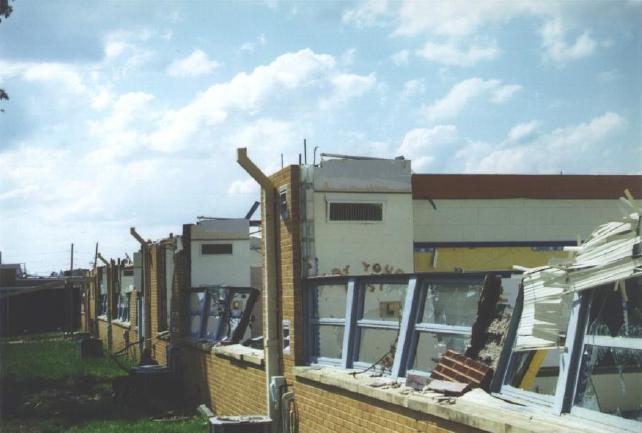 |
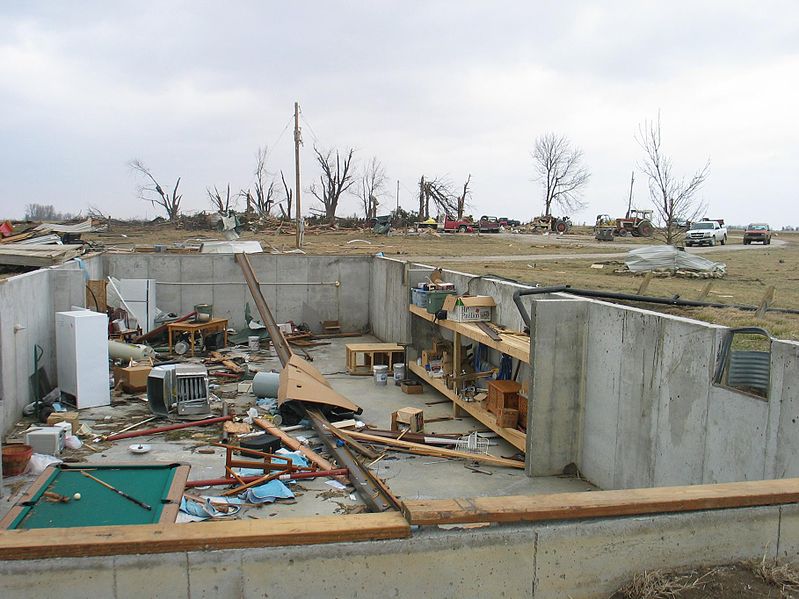 |
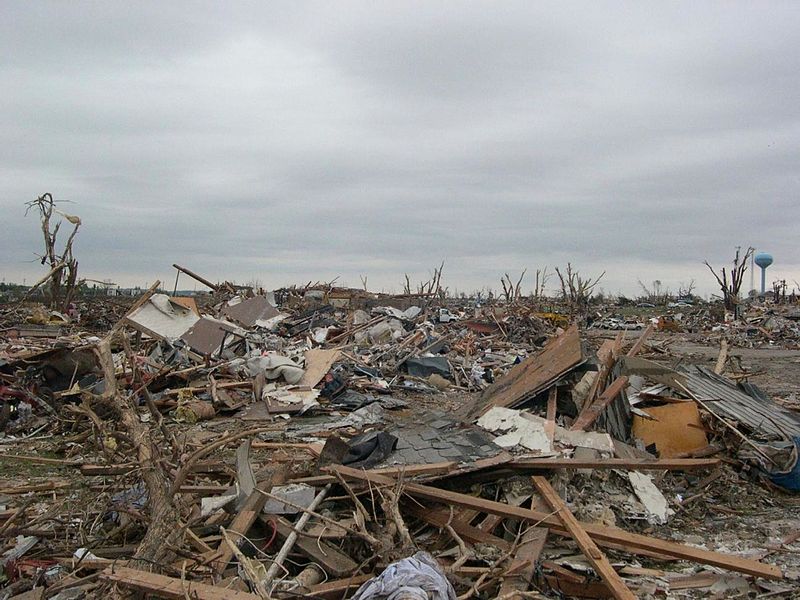 |
